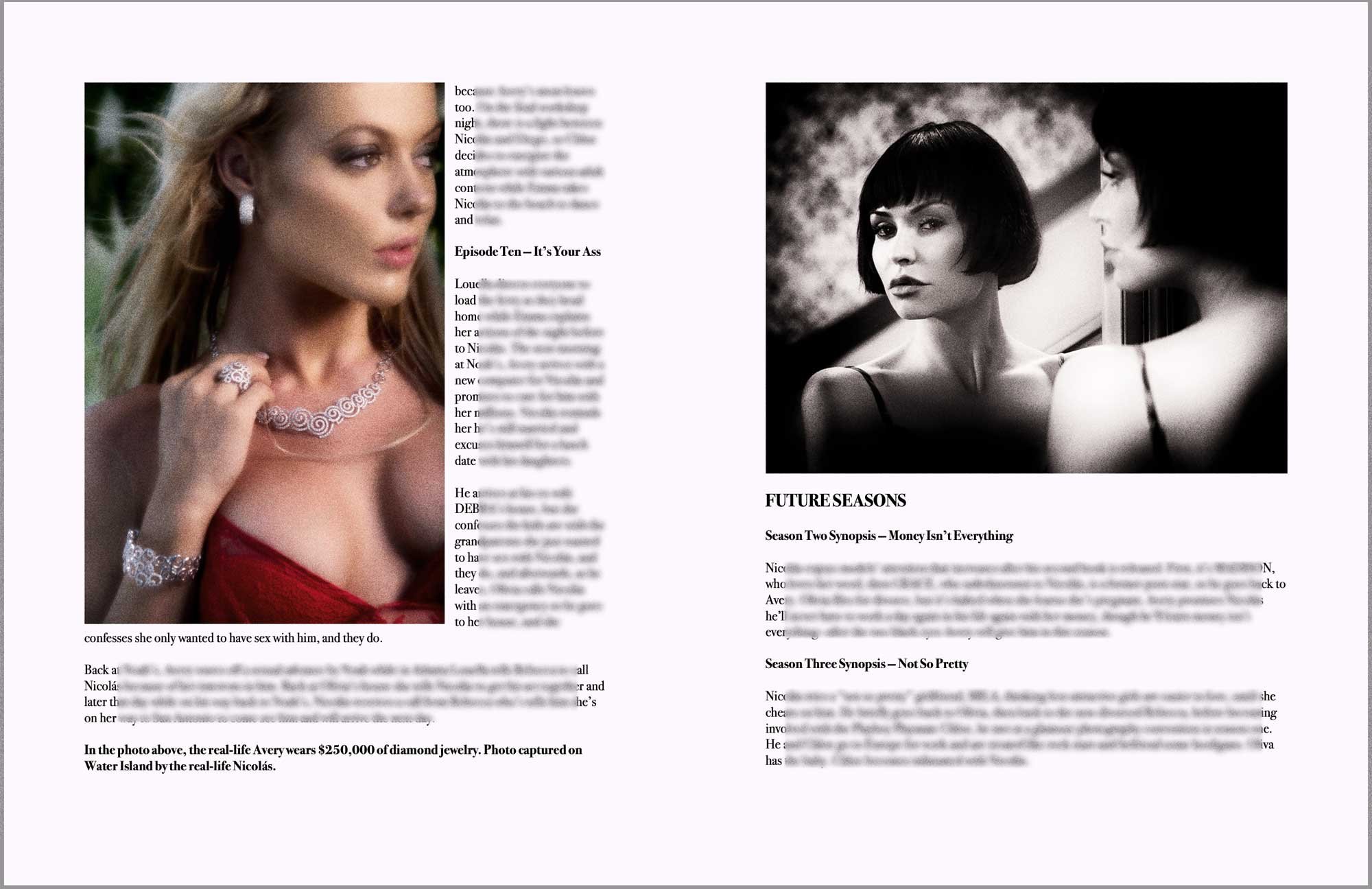How to create a TV show bible
By Rolando Gómez
I first learned about show bibles on November 1, 2017, a memorable milestone day in my career. While at the Variety Inclusion Summit that year I had a seat as a guest of one of my heroes, the late and great writer and director John Singleton. Later that day, I pitched John a TV series idea and he asked if I had a show bible. I had no clue what one was, so I told him I didn’t have one. John said, “You need one.”
John, the youngest and first person of colour ever nominated for the Academy Award for Best Director, Boyz in the Hood, had a new series out that year, Snowfall. And as an A-list director and writer, in one response John opened my eyes to the importance of a series show bible – and I will forever be grateful.
When it comes to series show bibles I don’t know everything, but I’ve educated myself and created quite a few, and hope to pass on what I’ve learned. (Some of the screen captures are blurred-out on purpose, as these pilots are available for market.)
These screen captures of three of my show bibles provide a visual example of various layout ideas to show you the type of work that goes into a show bible and the impact of visual graphics.
It’s harder to sell a series than a feature, and uncredited writers need every edge they can get.
I’ve seen many aspiring series writers try to write multiple episodes of their first season. Save your future episodes for the writers’ room, if your pilot gets picked up – that is where future episodes are written. Use that time to create a strong show bible instead. This is where you will describe those future episodes in broad-brush strokes.
Like your pilot’s teaser, the show bible must grab the reader immediately from the first page and continue to do so with each page.
For example, in one show bible I selected the “classified” theme because that series deals with a cover-up. The “top secret” cover sheet makes any industry professional want to see more. The cover sheet itself is not classified, and after the anthology’s overview on page two, the “federal law” disclaimer in red font naturally makes any person want to see more out of human curiosity of “declassified” information.
My previous manager, who unexpectedly passed away last year, made show bibles mandatory for any pilot. I share this advice to aspiring series writers that want to earn credentials, not ride hobbyhorses. It’s harder to sell a series than a feature, and uncredited writers need every edge they can get – plus it shows you’re willing to do the work.
Some experienced writers create a show bible first, then write the script, and others the script then the bible. I’ve done both.
Regardless of your workflow, a show bible usually includes:
the title
logline
theme
tone
nutshell
setting
synopsis of the series
about the writer
characters and their arcs
each first season episode synopsis
a brief synopsis of each season
and the series’ importance.
If your series gets picked up, a show bible transitions into a “living” bible – it will constantly grow and get updated with every episode and future episode, season to season. While there are no rules to page limits, initial show bibles are usually 5-15 pages of written text. If you add images, allow for extra pages.
One purpose of the show bible is to create excitement about your series and to showcase the obstacles your characters must overcome beyond the pilot.
Normally with a feature script, you try to sell a “one and done” two-hour movie, and while pitch decks help in your feature script – as do the traditional one- or two-sheets – a television series needs to generate hours and hours of future story that’s created by a group of writers managed by a showrunner in a writers’ room.
A show bible shows you can write, and like your pilot script, it must be polished because chances are the powers to be will read or glance at your show bible first. It’s rare that the executives who greenlight your series on a network, cable, or streaming service read your pilot script. They leave that to the readers who provide coverage, plus the producers and directors – but they will at least thumb through your show bible.
You can Google “television show bibles” and find many show bibles from your favourite shows. Some of the newer ones use more visuals, not just text. I create mine in Photoshop and MS Word, and my late manager would give me feedback until he liked it, just like with my scripts.
I first started to make my show bibles after I downloaded and studied the show bibles for Breaking Bad (10 pages), The Wire (79), True Detective (10), Stranger Things (23), Lost (27), Grey’s Anatomy (22), Carnivale (61), Battlestar Galactica (53), Fargo (12), and Stargate (121). Google and do the research, they are out there with many others for free.
I’ll never forget the day John Singleton indirectly showed me the importance of a show bible. In a nutshell, a show bible helps you sell your show along with your verbal pitch, and will get you in the room to pitch faster than just a script will“. A show bible demonstrates you’re not afraid to put the work into your television series, plus it shows professionalism and perseverance.
Now go write.
Rolando Gómez
Rolando Gómez is a screenwriter, former U.S. Army combat photographer and fellow cohort in the Writer's Guild Foundation Veterans Writing Project. He’s also an Associate Producer for the Burbank Cinema Libre Studios’ feature I Am Gitmo.
You can connect with Rolando on Instagram, Facebook, and Twitter, contact him through his website, and find him on IMDb.
Get killer articles in your inbox.
Subscribe to Screenwriting Intelligence.






